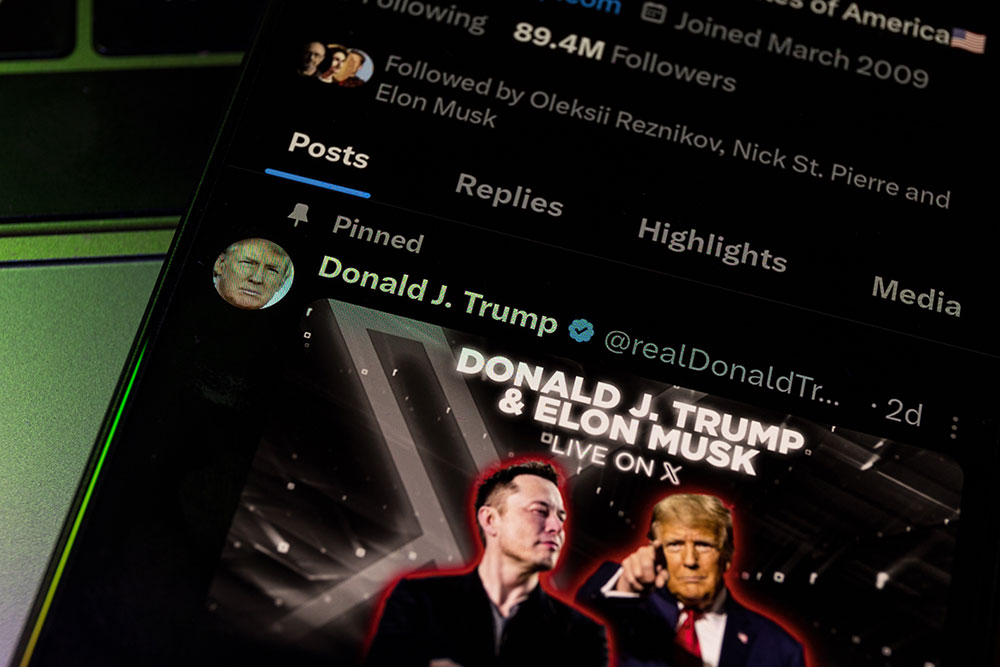Venture capitalists and tech execs made JD Vance Donald Trump’s choice for VP. Is what they have done to San Francisco what they also want for the nation?
In the late 1990s, I lived in a rented room in an old Victorian on Potrero Hill in San Francisco. This was just before the Tech Boom of the ’90s imploded, and the entire Bay Area was awash with lavish corporate parties. The vibe at that time was a lot, with dramatic and excessive displays of wealth as each new NASDAQ company tried to out-glitz the other.
Tech companies had already transformed the Santa Clara Valley into Silicon Valley, replacing orchards from Sunnyvale to the southern reaches of San Jose with campuses for the likes of Apple, Oracle, Adobe, Intel, Hewlett-Packard and Cisco.
But tech employees were choosing to live in San Francisco and commute down the Peninsula, reversing traffic flows that traditionally moved from the suburbs into the city in the morning and back again at quitting time. Though the tech downturn of 2000 would soon hit many of these companies, this was the beginning of Big Tech “invading” San Francisco and altering its politics—and national politics—in ways we are just now beginning to understand.
The impact companies like Salesforce, Yelp and Twitter have had on San Francisco has gone far beyond economics. The city itself has become a pilot program with which to study what tech and cryptocurrency titans might envision for our nation. Because their companies are here, many executives have focused their political designs on and around the Bay Area and, in particular, San Francisco—historically known as a hotbed of LGBTQ+ activism and progressive politics.
While often claiming a moderate, centrist or even “progressive” mantle, and riding the wave of the YIMBY movement, tech and crypto executives and VC heads Garry Tan, Marc Andreessen, Ben Horowitz, Peter Thiel, David Sacks and Balaji Srinivasan, among others, have altered San Francisco’s political landscape, helping elect Mayor London Breed, recalling progressive District Attorney Chesa Boudin, and upsetting the school board and, most recently, the Democratic Central Committee. They are pro-police, support criminalization of homelessness and—echoing new Democratic campaign rhetoric re: MAGA—can rightfully be called very, very weird.
Since Trump tapped Ohio Senator J.D. Vance as his VP, it has been widely assumed that Thiel, Sacks, Elon Musk and other tech titans pushed for Vance to be Trump’s VP pick. Paypal founder Thiel, in particular, has attracted media attention.


The Paypal founder poured $15 million into Vance’s Ohio Senatorial campaign—more money than Vance raised within his own PAC. And Thiel helped Vance ingratiate himself at Mar-a-Lago with Trump for an endorsement. Trump has famously said about that meeting that Vance was “kissing my ass, he wants my support so bad.” And shortly before the VP pick was revealed, Thiel has said he would vote for Trump only with a gun to his head, which implies that the grander scheme may look beyond the current MAGA leader.
The two men’s ties go back to 2015, when Thiel hired Vance to work at his venture capital firm Mithril—named after the precious metal in Tolkien’s Lord of the Rings series—and introduced Vance to his networks of tech and venture fund capitalists, as well as his own version of reactionary Catholicism, giving J.D. a moral purpose to replace or justify the simple thirst for money and success Vance has said he had before.
Vance soon left Mithril for the VC firm Revolution. Former employees from Mithril told the Wall Street Journal that Vance was barely seen at Mithril and cannot remember anything he accomplished there. Vance, they said, was mostly promoting his memoir Hillbilly Elegy. Vance went on to found Narya (with funding from Thiel), a VC firm based in Ohio which invests in Rumble and a company called Strive, among others.
San Francisco and the Donor Class
The first signs of a new wind blowing in San Francisco came with the recalls of Chesa Boudin, a progressive district attorney, and school board members Ali Collins, Gabriela Lopez and Faauuga Moliga. Much of the San Francisco legacy media and even “liberal” outlets like NPR have reported superficially on these events as a city moving “centrist.” But more energetic and even unpaid digging by Bay Area alternative journalists like D. Scot Miller and Kevin L. Jones (co-hosts of the Doom Loop Dispatch podcast) Toshio Meronek (“Sad Francisco” podcaster) and Emily Mills (citizen journalist @sf_mills on X) has revealed a more disturbing picture.
The school board recall, for example, was led by a bizarre conglomeration of tech execs, out-of-towners who had just moved to the city, YIMBY (or Yes in My Backyard) supporters and back-channel affiliates of Moms for Liberty.
As documented by Southern Poverty Law Center, Moms for Liberty has spent the last few years attempting to overrun school boards and purge schools of LGBTQ+ materials, POC history and even gay-friendly Disney films. They seem, ultimately, to want to privatize and Christianize the schools.
Diane Yap, a major player in the school board recalls, as president of Friends of Lowell Foundation in SF—who accused then school board member Ali Collins of racism—would go on to regularly flame-throw racist tropes on X and in essays for the Manhattan Institute (where Christopher Rufo, architect of the GOP’s anti-DEI campaign, is also housed). Mills discovered that Friends of Lowell shared an IRS mailing address with Moms for Liberty.
Community volunteers Julie Pitta and Jeremy Mack did the work paid journalists should have been doing and led research for The Phoenix Papers, tracking money (at least what can be tracked) coming from all quarters into SF elections, under the guise of “moderation.” This money comes through both nonprofits and political PACS.
“Not surprisingly,” the authors write, “74 percent of all donations–over $10 million–comes from just 23 extremely wealthy, mostly right-wing and conservative donors and corporations. Combined, these donors have a net worth of over $22 billion.”
Miller, a Bay Area journalist, says he first noticed a sea change in the early 2000s, when the older, Black chess players at Market and Powell were cleared out of the area by police and the city.
“These older Black men were keeping the peace down there, but then these new folks felt uncomfortable with them. All these tech people wanted to turn the city into the suburbs,” Miller says. “I kept thinking: ‘Who has that much power?—to culturally transform the city like that?’ And that’s also when our cultural institutions started to shut down.”
Miller and Jones have been tracking the rise and fall and rise again of tech in San Francisco on Doom Loop Dispatch, which has, over the last few years, taken a turn toward the bizarre as millionaire and billionaire techies throw their considerable weight around.
‘Grays’ Are Really Red
Garry Tan, CEO of Y Combinator, is nationally famous for calling for the “slow death” of still progressive members of the SF Board of Supervisors. (His attorneys contacted Metro to say that the remark was “a reference to lyrics in a 1996 Tupac Shakur song” and that “The tweet was made during an alcohol-fueled night of celebratory karaoke in Chinatown; an act for which Mr. Tan has since profusely and publicly apologized.”—Editor)
Tan has poured over a hundred thousand dollars into props and recalls, as well as supporting YIMBY and YIMBY-allied electeds. Though he calls himself a Democrat, Tan is allied in many ways with Balaji Srinivasan, CTO of Coinbase, who calls for whole sections of San Francisco to be walled off from “Blues,” or Democrats. Srinivasan is famous for the tech-bro version of Project 2025, “The Network State” manifesto, also published online. The book promotes tech communities starting whole new cities, even new countries—as successors to the nation state, or “network states.”
In a “Moment of Zen” podcast, Srinivasan stated that San Francisco’s call for Musk to remove the unpermitted and possibly dangerous “X” sign he had hung on Twitter headquarters somehow logically necessitated creating “Gray Zones” comprising whole city blocks in San Francisco, where only “Grays,” for example, with key cards, could enter. (Musk’s company recently announced it would leave SF for the South Bay.)
On the podcast, Srinivasan said Gray Zones would be the natural “inverse of the situation” in which San Francisco Democrats or “Blues” actually enforce city laws on tech companies. His “Grays” are tech workers, their families and police—lots of police—who would wear uniforms and badges showing their “Gray pride” and march in parades with drones flying overhead. Balaji also calls for an overall purge of “Blues” from the City, citing Saddam Hussein’s “De-Ba’athification” in Iraq as a model.
Many write Srinivasan off as nuts, but Srinivasan is a former partner at Andreessen and Horowitz, which, with a gaggle of other tech founders, recently made a play to establish “California Forever,” a tech-company town in Solano County, in the East Bay. (California Forever removed itself from this November’s ballot in Solano due to community pushback.)


Tan, who has funded and fundraised for candidates and recall campaigns in San Francisco, speaks often in public with Srinivasan. Tan has advocated for tech “campuses” in San Francisco—some of which have taken shape in the form of the Solaris Project, which first listed Srinivasan as a funder and then claimed he had no role in the project. (The Solaris idea is also to create sort of tech-exclusive neighborhoods in the City, to “build community”—bypassing the idea that one might build community by connecting with people who already live in these neighborhoods.) Tan recently said at an “Effective Accelerationist” meet up: “If we can build it here, we can build it anywhere and we can take over the whole world.”
No DEI on the Musk Space Ark
In April, reporter Gil Duran wrote, in an important article for The New Republic: “Those who try to downplay Balaji’s importance in Silicon Valley often portray him as a ‘clown.’ But Donald Trump taught us that clowns can be dangerous … Since his secession speech at [Tan’s startup incubator] Y Combinator, Balaji’s politics have become even more stridently authoritarian and extremist, yet he remains a celebrated figure in key circles.”
Scratch the surface of figures like Thiel, who is obviously politically important, and you find the same “Network State” ideas in Thiel’s founding of the SeaSteading non-profit, which seeks to build autonomous, floating, libertarian nations. One version of sea-steading, EphemerIsle, is enacted every summer in the Sacramento Delta, in which enthusiasts build a flotilla of rafts upon which they then proceed to do a lot of drugs.
Journalist Duran notes that the SF mainstream media has turned a blind eye to this darker aspect of the “centrist” takeover. “No local story has mentioned [Tan’s] long affiliation with Balaji or the Network State cult that is currently trying to create tech-controlled cities around the globe, and which maintains a fascination with an alt-right, neo fascist movement known as the ‘Dark Enlightenment.’”
Overall, this seems a familiar trend of the absurdly wealthy, to attempt to remove themselves from the rest of society, or the unwashed masses, altogether. And serious attempts have been made at such “apartheid” nations, according to Oakland-based Miller, who says all these extremist and authoritarian ideas have taken the form of actual projects in Honduras, El Salvador, Nigeria, Palau and the Mediterranean.
Miller is especially concerned with the spread of this “tech takeover” into Oakland, where a similar effort to recall the newly elected female and Hmong Mayor Sheng Thao and Black, female DA Pamela Price has been 80 percent funded by hedge fund manager Philip Dreyfuss.
“We’ll see what happens here in the most racially diverse metropolitan area in the nation. I love this community and I am going to try to protect it,” Miller says.
“There is a profound anti-Blackness under all these intentions, which they try to cover by running POC candidates who do their bidding. But remember that Peter Thiel and David Sacks were authors of The Diversity Myth in 1996.”
In December of 2022, Musk tweeted a painting of a spaceship called “The Ark” getting ready to launch from Earth with animals marching up its ramp, two-by-two. Armed guards kept masses of humans at bay, who all, in this painting, appear to be Black. Musk’s X platform is hardly alone in amplifying the racist dog whistles and misogyny of the Tech-Crypto-Bro-MAGA movement. Vance’s capital fund Narya funds the social media platform Rumble, which is rife with white supremacist conspiracies, as well as asset-management company Strive, which has sent lengthy, threatening letters to Boeing, claiming that its “DEI” policies created Boeing jet crashes and that it must cease integrating its workforce immediately.
Libertarian Dreams and Authoritarian Schemes
Successful tech and VC executives have built and controlled corporations and seem unable to comprehend why they can’t control the overall society as well. As David Corn reported in Mother Jones, democracy is an obstacle for them and Thiel has said as much. “I no longer believe that democracy and freedom are compatible,” he wrote for the Cato Institute. He also asserted that women’s suffrage is an obstacle to libertarianism.
Applying top-down, corporate logic to our nation would likely feel a natural extension of the power executives create for themselves in the so-called “private” world, actually often a major beneficiary of government (read: taxpayer) funds. Anyone who opposes them must be simply removed from the company, or, er, country.
But these dictatorial dreams—fueled by the new, untethered, or “crypto” currency—bump up against the realities of American democracy and the fact that not everyone who lives in their worlds agrees with them, wants to join their communities without being paid to do so, nor even appreciates their products, which they often refer to as miraculous feats of “innovation.”
California Forever CEO Jan Sramek, an immigrant from the Czech Republic, gets his Western idealism, he says, from “the movies” and now intends to change the face of California. While he and other execs want to “build community” for the children of tech employees in Solano or elsewhere, they fail to appreciate how tech itself has destroyed much of the community they now crave.
The coordinated influence of these power players from the Bay Area is now visible in the Trump-Vance platform and Trump’s promotion, early this year, of “freedom cities” built by private individuals on federal land. The platform also calls for uninhibited development of AI and states the GOP “will end Democrats’ unlawful and unAmerican Crypto crackdown and oppose the creation of a Central Bank Digital Currency [sic].”
Additionally, Trump “will defend the right to mine Bitcoin,” and, in an apparent nod to Musk, “create a robust Manufacturing Industry in Near Earth Orbit, send American Astronauts back to the Moon, and onward to Mars, and enhance partnerships with the rapidly expanding Commercial Space sector to revolutionize our ability to access, live in, and develop assets in Space.”
Reclaiming ‘Lord of the Rings’
Self-driving cars, smart phones, on-line shopping, Uber Eats, DoorDash, “self-check-out” and AirBnB have increasingly created a society in which human contact, and especially contact between classes, races and ethnicities, has plummeted. Just because these innovations have made life prosperous for the C-suite class does not always mean they have made life “better” for all of us. Indeed, technology is likely now killing us.
Nowhere is the conflagration and disaster that is the ongoing climate crisis mentioned in their blogs and speeches as these executives extoll AI and cryptocurrencies, both of which are setting the transition to alternative energy back decades. We are already 30-plus years behind in the “race” (if there even is one) to ensure a habitable world for most of us.


Recall that Thiel hired Vance to his firm Mithril. Another of Thiel’s companies—Palantir, the controversial, CIA-funded surveillance and data synthesis company founded in Palo Alto, which helped target immigrant families for deportation after Trump’s election—also takes its name from LOTR, as does Vance’s Narya.
Both seem to love the Lord of the Rings series. I do too. But what role do these excesses play on our Earth?
Chief opponent to Sauron—the evil force that must be defeated in LOTR—is Gandalf the Grey, known to all groups in Middle-earth and loved by them all. He did not separate elves from dwarves, nor hobbits.
But there is another wizard—Saruman the White—who joined with Sauron and tried to recruit Gandalf to his cause, in which only one race—the race of Men—would rule the kingdom. Gandalf refused, countering that evil was afoot. Fighting Sauron would “require the union of all our strength,” Gandalf said. In the end, it was a diminutive hobbit and a mixed-race band of unlikely warriors who saved the realm.
As for Thiel, Vance and others who see themselves as lords and kings—now casting their sizable lot with the would-be dictator of our own lands—the legend of Mithril may be apt.
In Fellowship of the Ring, Gandolf recounts the legend of the Dwarf Durin, his people and how they mined for Mithril: “The Dwarves tell no tale, but even as Mithril was the foundation of their wealth, so also it was their destruction: they delved too greedily and too deep, and disturbed that from which they fled, Durin’s Bane. Of what they brought to light, the Orcs have gathered nearly all, and given it in tribute to Sauron, who covets it.”
Ami Chen Mills is an author, coach and host, with a team, of the podcast and radio show, “Moment of Truth with Ami Chen Mills,” where she has recently covered J.D. Vance and the tech bros of San Francisco. Meilin Obinata and Joy Schendledecker contributed to this article.
An earlier version of this article misattributed a post applauding Chilean dictator Augusto Pinochet’s practice of throwing communists out of helicopters to Mr. Tan. The author of the X.com tweet was made by Tan’s colleague, Lee Edwards, who described it as a “sarcastic shitpost.”—Editor


